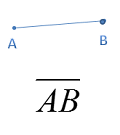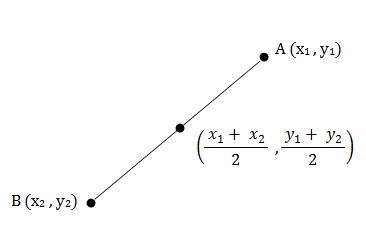Line Segment DefinitionWhat is line segment?In mathematical terms, a line segment is defined as the shortest distance between two points on a line, with the two points serving as the endpoints of the line segment. The endpoints are often represented using ordered pairs of real numbers and the line segment can be graphically represented on a coordinate plane. A line segment can be classified based on its length, orientation, and position relative to other line segments. For example, a line segment can be classified as a horizontal line segment, vertical line segment, or diagonal line segment based on its orientation. Similarly, a line segment can be classified as a ray, a line, or a segment based on its length. A ray extends indefinitely in one direction from its endpoint, a line extends indefinitely in both directions, and a segment is finite with defined endpoints. Line segments also play a significant role in understanding and solving problems in Euclidean geometry. The concepts of congruent line segments, midpoints, and bisectors can be used to solve problems involving line segments in geometry. 
In addition to their importance in geometry, line segments also play a crucial role in computer graphics and computer science. Line segments are used to represent graphical objects such as lines, curves, and shapes in computer graphics. In computer science, line segments are used to represent edges in graphs and in the representation of images, videos, and other digital media. They are also used in various other fields, including engineering, physics, and economics. In engineering, line segments are used to represent linear objects such as beams and rods. In physics, line segments are used to represent the path of a particle or object moving in a straight line. In economics, line segments are used to represent trends and patterns in data, such as the relationship between supply and demand in a market. Symbol of line segmentA line that is confined by two endpoints is symbolised graphically by a line segment. The line segment symbol is used to represent this concept in mathematical diagrams, graphs, and other visual representations of mathematical concepts. The line segment symbol is typically represented as a straight line with arrows at each end, indicating the direction of the line and the two endpoints. In computer graphics and design, the line segment symbol is used to represent a straight line in two-dimensional space. The symbol is often used to represent the edges of polygonal shapes, such as triangles, squares, and rectangles. In these applications, the line segment symbol is used to visually represent the relationships between the points that make up the shape. 
In engineering and technical drawings, the line segment symbol is used to represent lines and edges in three-dimensional space. The symbol can be used to represent lines that are not straight, such as curved lines, and it can also be used to represent the edges of solids. In these applications, the line segment symbol is used to provide visual clarity and to make the representation of complex shapes easier to understand. Overall, the line segment symbol is an essential component of mathematical and technical representation, providing a simple and effective way to represent a line that is bounded by two endpoints. Measuring line segmentMeasuring a line segment refers to determining its length or distance between its two endpoints. There are several ways to measure a line segment, depending on the context in which it is being used. Here are some common methods:
The formula for line segmentThe line segment formula is a mathematical expression used to determine the length of a line segment in a two-dimensional plane. The line segment is defined by two points, which are its endpoints, and the length of the line segment is the distance between these two points. The formula for the length of a line segment is based on the Pythagorean theorem, which states that the square of the length of the hypotenuse of a right triangle is equal to the sum of the squares of the lengths of its other two sides. In the case of a line segment, the two endpoints can be considered as the two sides of a right triangle, and the length of the line segment can be considered as the length of the hypotenuse. The formula for the length of a line segment, L, can be expressed as: L = √((x2 - x1)2 + (y2 - y1)2), where (x1, y1) and (x2, y2) are the coordinates of the two endpoints. 
This formula can be used to determine the length of any line segment in a two-dimensional plane, provided that the coordinates of its endpoints are known. It is a useful tool in geometry, trigonometry, and many other branches of mathematics, as well as in engineering and other technical fields. Construction of line segmentThe method for constructing a line segment is drawing a straight line of a specific length between two points. A ruler, compass, or straightedge can all be used to create a line segment, among other tools. Using a compass and a straightedge is the most used technique in geometry.
Examples of line segmentA line segment is a portion of a straight line that connects two points. There are many examples of line segments in everyday life and various fields. Some of the most common examples include:
These are just a few examples of line segments in various fields. Line segments play a crucial role in many areas and are fundamental to a wide range of mathematical and practical applications. In conclusion, line segments are a fundamental concept in mathematics, geometry, and various other fields. They provide a simple and effective means of representing and solving problems involving straight lines and distances between points. Their versatility and importance make them essential tools for problem-solving and understanding complex concepts in various fields.
Next TopicMental Health Definition
|
 For Videos Join Our Youtube Channel: Join Now
For Videos Join Our Youtube Channel: Join Now
Feedback
- Send your Feedback to [email protected]
Help Others, Please Share









